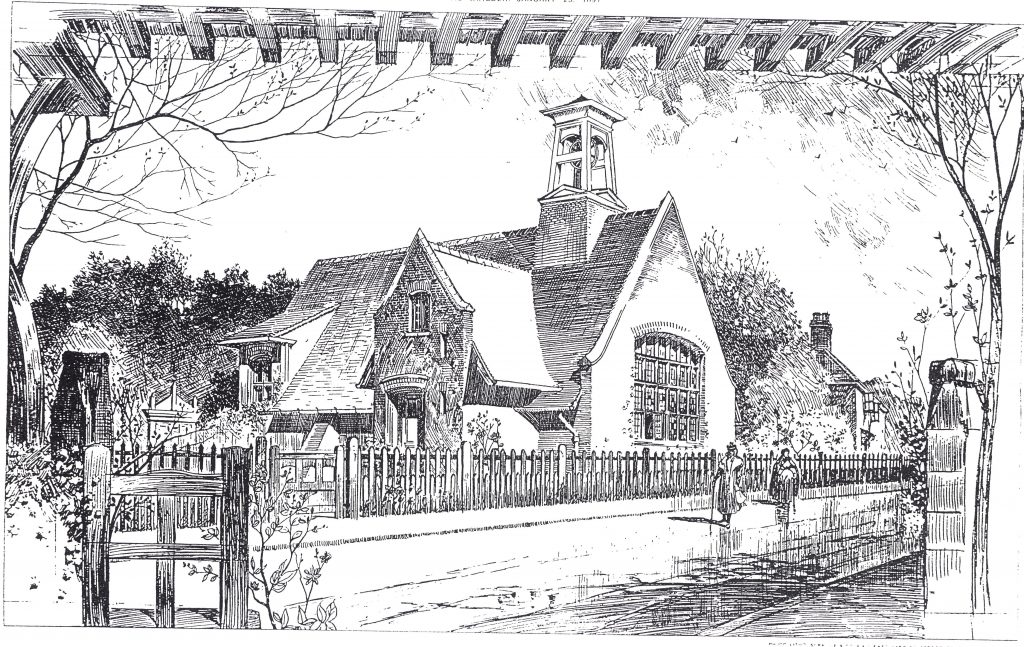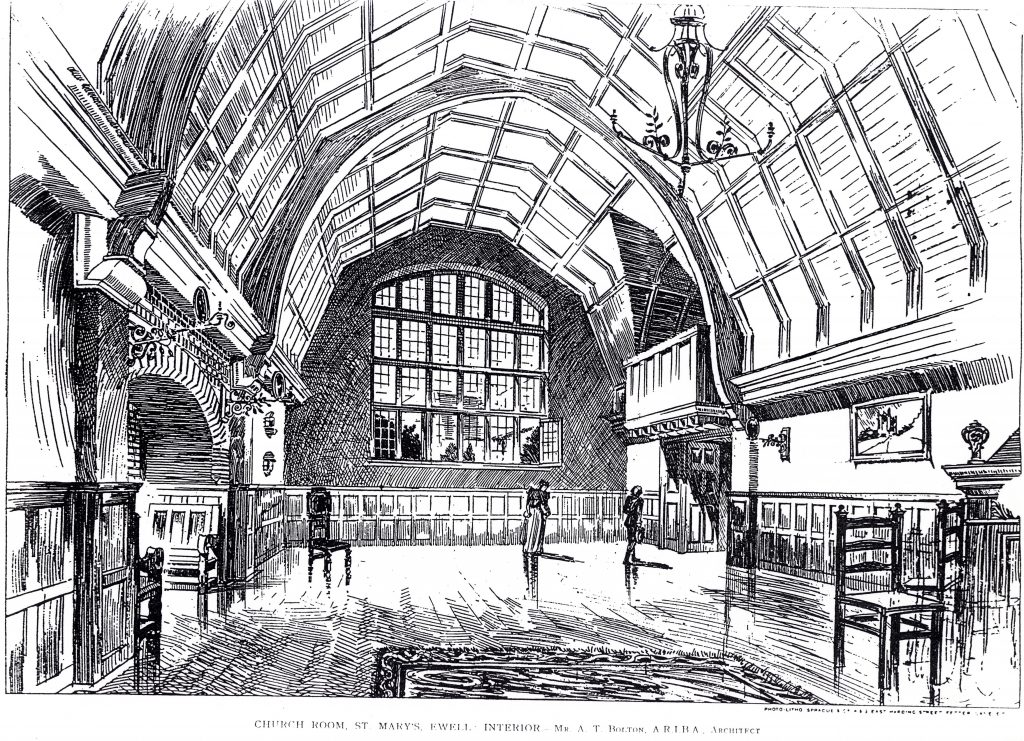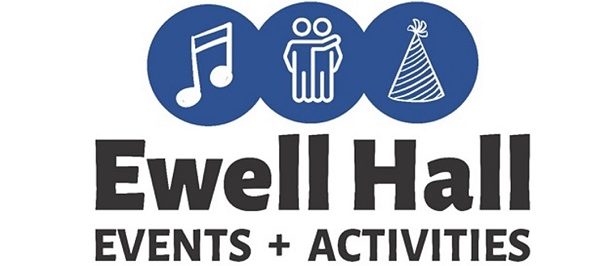Background History to Ewell Hall – a Fascinating Building
Ewell Hall was originally built as ‘the church room’ for St. Mary’s Ewell in 1894. Prior to 2021, Ewell Hall was known as St Mary’s Church Hall.
Ewell Hall is a building with a fascinating history and purpose which explains some of the unusual and very attractive architectural features. This article from 1897, soon after the hall was opened, explains its original use. Please note the capacities stated in this article refer to the 1894 design, things have changed since then!
| Extract based on an article in ‘The Builder’ magazine on 23 January 1897 CHURCH ROOM, ST. MARY’S, EWELL The church room of the parish church of St. Mary’s, Ewell, was erected by the vicar during the autumn of 1894, and was opened by the late Bishop of Winchester in the early part of 1895. The intention was to provide a small hall for gymnastic classes among the boys of the neighbourhood, besides its use as a common centre for parochial work. It is not primarily a mission hall, and the character of the neighbourhood and some of the purposes which the room was likely to serve suggested its architectural treatment.  It is fitted and furnished in a rather more finished manner than is usual in such halls ; the walls are plastered over a green stained and panelled dado, while the rafters are boarded in narrow widths of pitch pine, with mouldings forming panels capable of decoration hereafter. There are also double doors in the ample porch, which is in two storeys, the upper part open to the room, with a projecting gallery, the front of which is hung as doors so that the apparatus and chairs can be stored when the whole area of the hall is required. This loft is also intended for a music gallery, on occasion, being approached by a stairway in the depth of the porch. The room will seat 115 very comfortably, and will hold up to 150 when necessary. The recessed fireplace helps in the arrangement of the chairs. The use of the room as a gymnasium affected the construction also, to provide against the swing of the trapeze acting on an open roof. The room is divided into three bays by two strong arched trusses, to which the fireplace and porch provide three points of support, the fourth being a strong external buttress. The trapeze and other apparatus hang or rest on two lattice-girder purlins of wood I ft, 9 in. deep resting upon the trusses and continuous from gable to gable. The turret, which will carry a large bell, also stands upon these framed purlins.  The end wall of the room is arranged for diagram and lantern exhibitions, and the gas-lighting is studied for that purpose and to avoid interference from the gymnastic apparatus. There are four red Mansfield stone corbels to the trusses, excepting which the building is all brickwork and wood framing. It has been very well built, under the supervision of the architect, by Messrs. Cornish & Gaymer, of North Walsham, except the fencing in oak by Messrs. Agate, of Horsham. The contract price was 600l., excluding fittings. Messrs. Spencer & Co. supplied the gymnastic apparatus, Messrs. Turpin the wood block flooring, Mr. Jackson the lead glazing, Messrs. Bailey S Co, the gas fittings, Messrs. Mears & Co. the bell. The architect is Mr. Arthur T. Bolton, of Westminster. The drawings illustrated are by ‘Mr. C. E, Mathews, sketched from the building after completion. |
Ewell Hall has been a valuable and much appreciated resource for the local community for over 125 years.
We look forward to welcoming you as Ewell Hall moves forward to serve new generations in our community.
